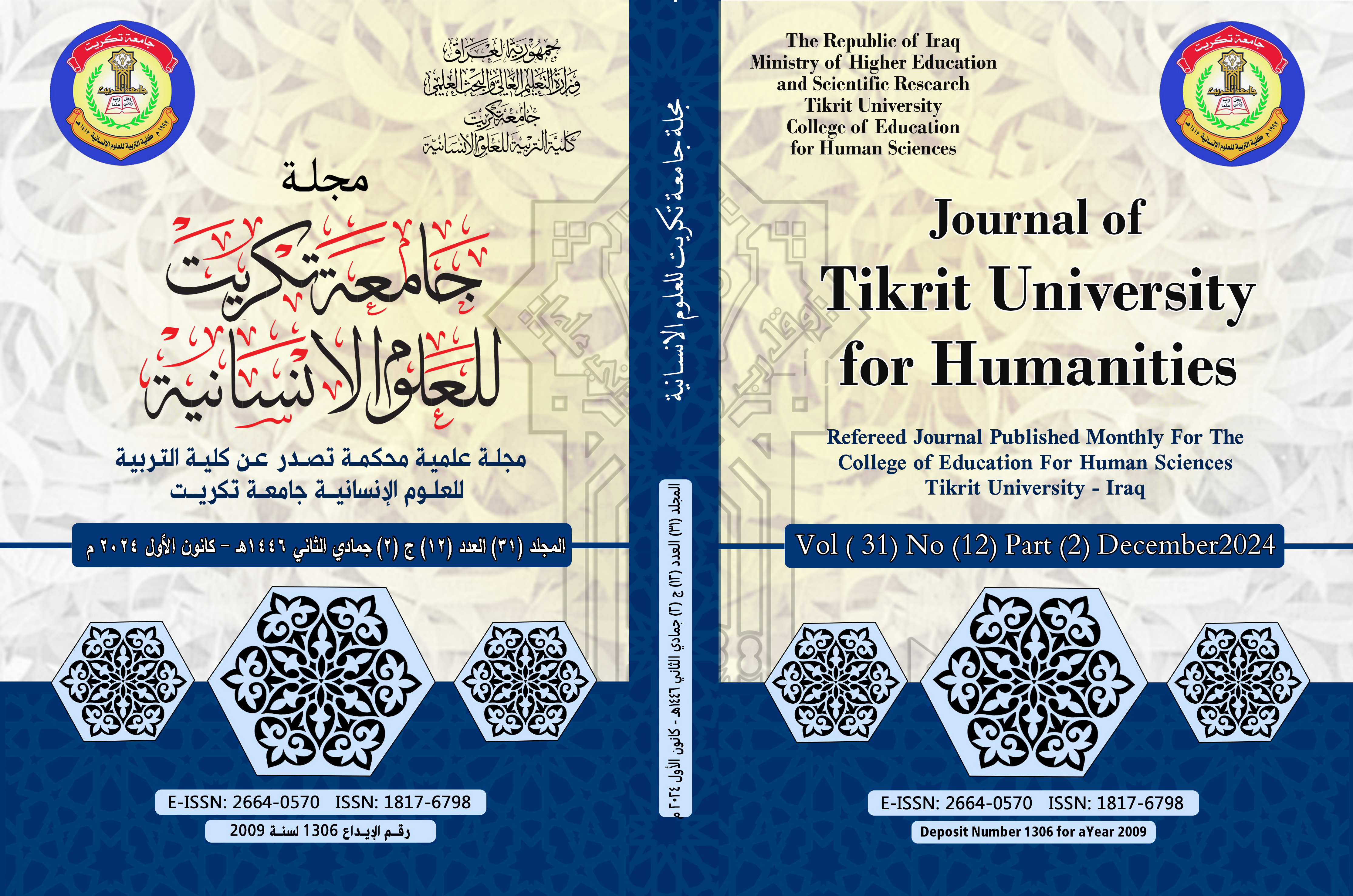Reversal in Wafaa Abdel Razzaq's Ann
Main Article Content
Abstract
The research highlights the importance of reversal in literary narrative and its role in enhancing the significance and expressive effectiveness of the literary work, comparing it to cinematic technique that transform from one scene to another. The research deals with Wafaa Abdel Razzaq's Anne. The study is divided into two sections: while the first discusses the main purposes of reversal, the second studies its types. The researcher relies on the descriptive analytical method. The study deals with reversal of pronouns and how it signifies surprise. Reversal is also recognized through the pattern of cultural questions aiming at cultural answers. The study, further, deals with types of distraction, including extended, segmental, and rapid. The latter is considered one of the methods that the narrative relies on to accelerate events by deleting things from the text that do not need to be mentioned. The topic is generally comprehensive to reveal the methods of reversal and its types in the novel which attracts the recipient's attention to clear spaces of semantic aspects. This provides the recipient with a serious and clear idea about the novel and its techniques.
Metrics
Article Details

This work is licensed under a Creative Commons Attribution 4.0 International License.
College of Education for Humanities, TIKRIT UNIVERSITY. THIS IS AN OPEN ACCESS ARTICLE UNDER THE CC BY LICENSE http://creativecommons.org/licenses/by/4.0/
References
• Al-Iltifat fi al-Balagha al-Arabiyya, Tahir Abdul Rahman Qahtan, Dar al-Mamun for Printing and Publishing, 2nd ed., 2005 ...dah, by al-Qazwini, edited by Muhammad Abdul-Moneim Khafagi, Dar al-Jeel Beirut, 3rd ed., n.d.
• Al-Badi’, by Ibn al-Mu’tazz, Dar al-Jeel, 1st ed., 1990
• Arabic Rhetoric, Its Foundations, Sciences and Arts, Al-Maydani, Dar Al-Qalam, Damascus, 1996, 1st ed.,
• Narrative Technology in the Rhetorical Perspective, Muhammad Bu Haqa, Dar Al-Abyad for Publishing, 1st ed., 2019.
• Characteristics of Style in the Poetry of Tarafa Bin Al-Abd, Ruwa Jumaa Younis, Dar Al-Awda for Printing, 2000
• Ann Novel, Wafaa Abdul Razzaq, Iftar for Printing and Publishing, Nile Corniche, 1st ed., 2019
• Specific Time and Problems of the Narrative Genre, Haitham Al-Hajj Ali, Arab Diffusion Foundation, Beirut, Lebanon, 1st ed., 2008.
• The Poetics of Displacement: A Study in the Aesthetics of Deviation, Dr. Khaira Hamza Al-Ain, Dar Al-Qalam Beirut, 2nd ed., 1999.
• Abdel Moneim Zakaria Al-Qadi, The Narrative Structure in the Novel, Introduction: Ahmed Ibrahim Al-Hawari, Ain for Human and Social Studies and Research, 1st ed., 2009.
• The Art of Attention in the Discussions of Rhetoricians, Jalil Rashid Faleh, Journal of Mustansiriya Literature, 1st ed., Baghdad, Issue 9, 1984.
• In Methods of Analyzing Narrative Discourse, Amr Aylan, quoted from Gerard Genette, Publications of the Arab Writers Union, Studies Series 2, Damascus 2008.
• The Detailed Dictionary of Rhetoric Sciences, In’am Akkawi, Reviewed by Ahmed Shams Al-Din, Dar Al-Kutub Al-Ilmiyyah, Beirut, 1st ed., 1992.




